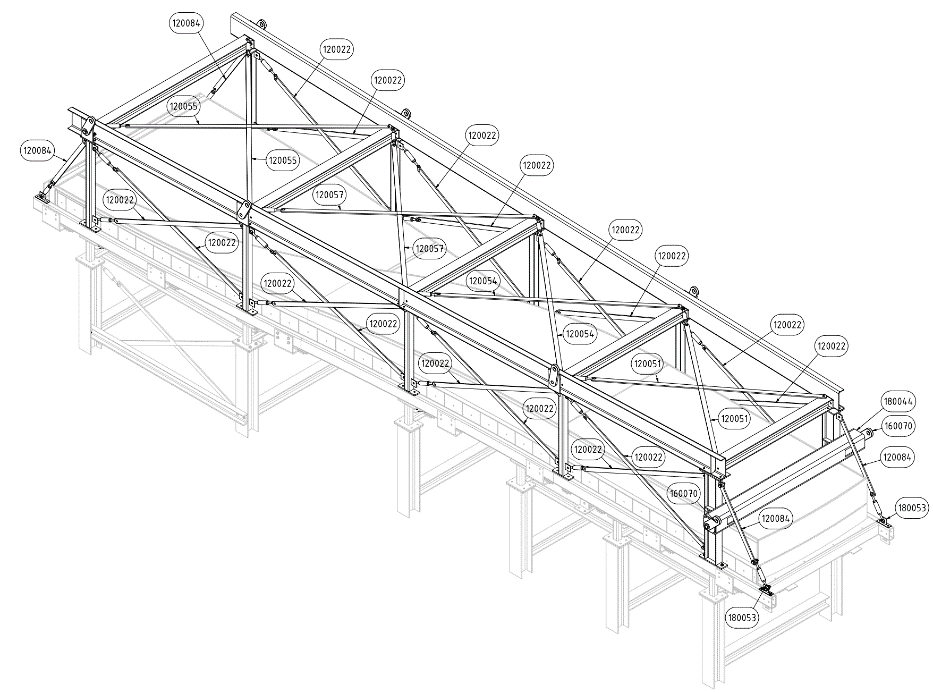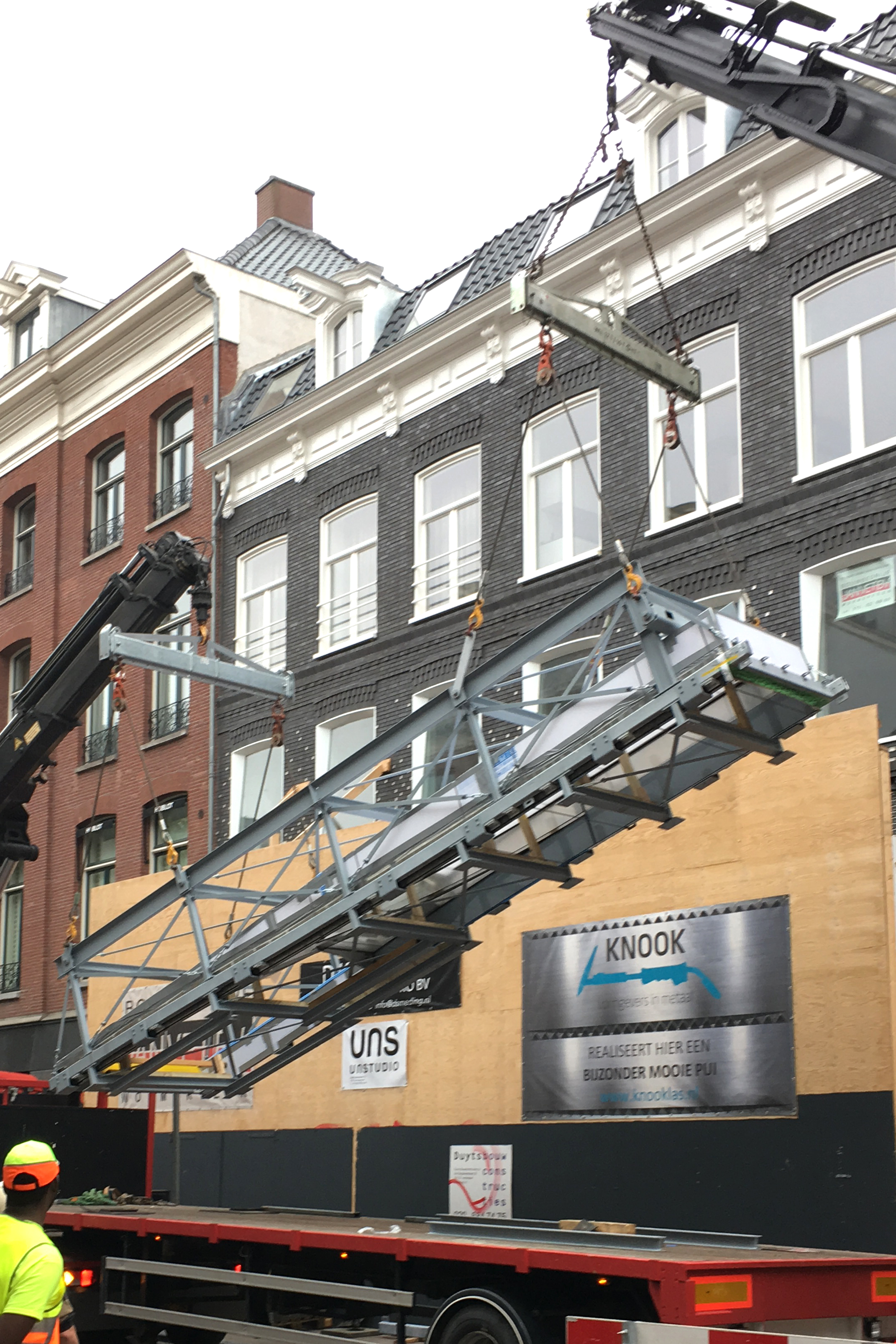Transposing a facade
Challenge accepted: three curved glass boxes, each no less than 8 meters long, entirely held together by a structural sealant (no bolts used), to be assembled horizontally, and mounted vertically on site.
The famous P.C. Hooftstraat in Amsterdam was recently adorned with this show stopping glass facade designed by UNStudio, named ‘The Looking Glass’. Three curved glass boxes descend from the upper floors, resembling the flow of billowing fabrics. The glass boxes start flush with the adjacent buildings and cantilever outward while moving upward. This gradual movement emanates a fluidity you would not associate with glass.
Octatube was responsible for the pre-engineering, technical design, production, and assembly. The boxes are entirely bonded by means of structural silicone, thus no bolts were used. Slender stainless steel profiles in between the panels define the glass box shape.
The upper panel slightly cantilevers outward, creating a tensile load on the silicone bonding. The lower pane is pushed in the direction of the sealant joint by the mass on top of it.
Custom steel auxiliary frame
We designed a custom steel auxiliary frame that functioned as a stiff mold around the glass boxes to make sure that the structural sealant did not experience too heavy loads during transport and hoisting. The structure surrounds the glass boxes on all sides and is mechanically linked to the main steel of the glass boxes.
The glass boxes were transported horizontally in their auxiliary frames to the P.C. Hooftstraat. On site, they were rotated and vertically mounted into the facade: one of the most spectacular challenges of this project.
The deflections of the glass boxes and the steel auxiliary frame had to be kept to a minimum, and therefore all stages of the assembly were calculated.
On site, two cranes handled the rotation of all three boxes with an elaborate pulley mechanism at the top and bottom of each box. In the first phase of the rotation, the box is carried by both cranes and pulley mechanisms, whereas in the last phase of the rotation (when the box is in full vertical position), only one crane and one pulley mechanism carries the load.
The rotating had to be done slowly to gradually control the self-weight of the glass box: going from a horizontal load to a vertical load before being mounted in the superstructure. Before the trucks arrived, the brackets attached to the steel in the superstructure were pre-installed and positioned. Once the glass boxes were connected to these brackets, the auxiliary frame was removed.
After months of preparation, the entire assembly was done in just 1.5 days. It all came down to the exact millimeters, from the silicone bonding, the curved glass and steel connections, and rotation on site: everything had to come together perfectly – almost a job for a Swiss watchmaker.
Figure 1: drawing of the auxiliary frame
Figure 2: lifting the auxiliary frame






